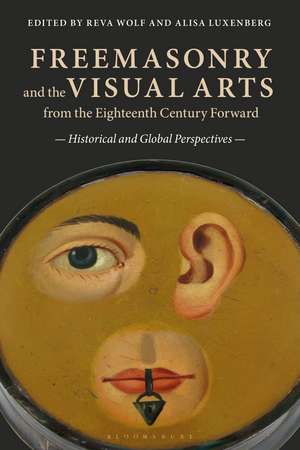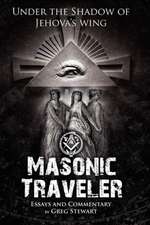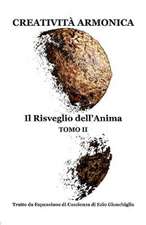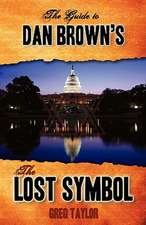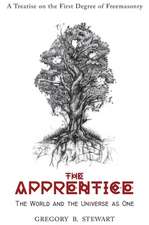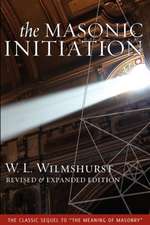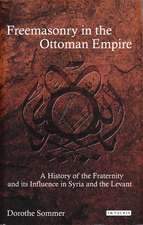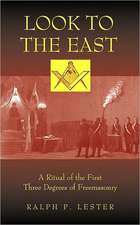Freemasonry and the Visual Arts from the Eighteenth Century Forward: Historical and Global Perspectives
Editat de Professor Reva Wolf, Professor Alisa Luxenbergen Limba Engleză Paperback – 2 sep 2020
Preț: 192.14 lei
Preț vechi: 219.44 lei
-12% Nou
Puncte Express: 288
Preț estimativ în valută:
36.78€ • 39.96$ • 30.91£
36.78€ • 39.96$ • 30.91£
Carte disponibilă
Livrare economică 31 martie-14 aprilie
Livrare express 15-21 martie pentru 68.16 lei
Preluare comenzi: 021 569.72.76
Specificații
ISBN-13: 9781501366925
ISBN-10: 1501366920
Pagini: 304
Dimensiuni: 152 x 229 x 21 mm
Greutate: 0.7 kg
Editura: Bloomsbury Publishing
Colecția Bloomsbury Visual Arts
Locul publicării:New York, United States
ISBN-10: 1501366920
Pagini: 304
Dimensiuni: 152 x 229 x 21 mm
Greutate: 0.7 kg
Editura: Bloomsbury Publishing
Colecția Bloomsbury Visual Arts
Locul publicării:New York, United States
Caracteristici
Provides new models and sources for identifying and interpreting masonic meanings and associations within artistic production and careers; case studies and close readings offer new methodologies for analyzing the links between Freemasonry and art within specific historical contexts
Notă biografică
Reva Wolf is Professor of Art History, State University of New York at New Paltz, USA.Alisa Luxenberg is Professor of Art History, University of Georgia, USA.
Cuprins
Acknowledgments List of illustrationsIntroduction: The Mystery of Masonry Brought to Light Reva Wolf and Alisa Luxenberg1. Freemasonry in Eighteenth-Century Portugal and the Architectural Projects of the Marquis of PombalDavid Martín López2. The Order of the Pug and Meissen Porcelain: Myth and History Cordula Bischoff3. Goya and Freemasonry: Travels, Letters, Friends Reva Wolf4. Freemasonry's "Living Stones" and the Boston Portraiture of John Singleton Copley David Bjelajac5. The Visual Arts of Freemasonry as Practiced "Within the Compass of Good Citizens" by Paul RevereNan Wolverton6. Building Codes for Masonic Viewers in Baron Taylor's Voyages pittoresques et romantiques dans l'ancienne FranceAlisa Luxenberg7. Freemasonry and the Architecture of the Persian Revival, 1843-1933 Talinn Grigor8. Solomon's Temple in America: Masonic Architecture, Biblical Imagery, and Popular Culture, 1865-1930William D. Moore9. Freemasonry and the Art Workers' Guild: The Arts Lodge No. 2751, 1899-1935 Martin Cherry10. Picturing Black Freemasons from Emancipation to the 1990s Cheryl Finley and Deborah Willis11. Saint Jean Baptiste, Haitian Vodou, and the Masonic Imaginary Katherine SmithSelected BibliographyIndex
Recenzii
* Choice Outstanding Academic Title of 2020 * Covering an impressive range of arts, essays touch on Meissen porcelain, etchings and engravings by Hogarth and Paul Revere, paintings by Goya and Copley, photographic portraiture of African American masons, and even masonic folk art in contemporary Haitian voodooism.
The great value of this diverse, wide-ranging and beautifully illustrated collection is that it turns a spotlight onto a central aspect of the masonic experience that previous scholars have too often overlooked. Future work will no longer be able to neglect how Freemasons utilized the visual medium to generate a novel field of social life and group identity.
Readers of this book will be rewarded with a greater understanding of the history, importance, and pervasiveness of masonry over the centuries, and its important role in the development of our own country.
This book is a wonderful, detailed scholarly work which explores the relationship between Freemasonry and the visual arts and vice versa . The book is beautifully illustrated with numerous colour and black & white images that help reveal the way the visual arts, particularly architecture, were influenced by and in turn influenced Freemasonry.
The book is copiously illustrated with 16 color plates and roughly 9 black-and-white figures illustrating each of the essays . Summing Up: Highly recommended. Lower-division undergraduates through faculty; general readers.
Explicating the vast network of interconnections between Freemasonry and the visual arts in multiple societies from the 18th century onward, this book is an invaluable resource of information and analysis. Wolf and Luxenberg have gathered a series of brilliantly insightful essays.
This is a much-needed book on an important subject. The links between freemasonry and the visual arts are many, but their scope has not been fully appreciated. Freemasonry and the Visual Arts from the Eighteenth Century Forward demonstrates how freemasonic symbols and ideas permeate a wide range of visual products, from architecture and urban planning to paintings and porcelain, and how freemasonry's influence can be detected in settings far from the lodges themselves. The book presents a global perspective on its subject, offering essays on Portugal, Iran, and Haiti alongside the better-studied settings of Britain and the United States. It likewise offers models for analyzing fragmentary or hidden historical experiences. Freemasonry and the Visual Arts suggests that art offers opportunities to tap into histories that otherwise would remain lost to us.
The enormously rich visual culture generated by Freemasonry has not received the attention it deserves from art historians. This pioneering collection of essays provides fascinating and tantalising illustrations of the rich artistic legacy of Freemasonry in many different countries ranging from Europe and America to Haiti, Iran and India across media including paintings, prints, metalwork, jewellery, ceramics and architecture.
The great value of this diverse, wide-ranging and beautifully illustrated collection is that it turns a spotlight onto a central aspect of the masonic experience that previous scholars have too often overlooked. Future work will no longer be able to neglect how Freemasons utilized the visual medium to generate a novel field of social life and group identity.
Readers of this book will be rewarded with a greater understanding of the history, importance, and pervasiveness of masonry over the centuries, and its important role in the development of our own country.
This book is a wonderful, detailed scholarly work which explores the relationship between Freemasonry and the visual arts and vice versa . The book is beautifully illustrated with numerous colour and black & white images that help reveal the way the visual arts, particularly architecture, were influenced by and in turn influenced Freemasonry.
The book is copiously illustrated with 16 color plates and roughly 9 black-and-white figures illustrating each of the essays . Summing Up: Highly recommended. Lower-division undergraduates through faculty; general readers.
Explicating the vast network of interconnections between Freemasonry and the visual arts in multiple societies from the 18th century onward, this book is an invaluable resource of information and analysis. Wolf and Luxenberg have gathered a series of brilliantly insightful essays.
This is a much-needed book on an important subject. The links between freemasonry and the visual arts are many, but their scope has not been fully appreciated. Freemasonry and the Visual Arts from the Eighteenth Century Forward demonstrates how freemasonic symbols and ideas permeate a wide range of visual products, from architecture and urban planning to paintings and porcelain, and how freemasonry's influence can be detected in settings far from the lodges themselves. The book presents a global perspective on its subject, offering essays on Portugal, Iran, and Haiti alongside the better-studied settings of Britain and the United States. It likewise offers models for analyzing fragmentary or hidden historical experiences. Freemasonry and the Visual Arts suggests that art offers opportunities to tap into histories that otherwise would remain lost to us.
The enormously rich visual culture generated by Freemasonry has not received the attention it deserves from art historians. This pioneering collection of essays provides fascinating and tantalising illustrations of the rich artistic legacy of Freemasonry in many different countries ranging from Europe and America to Haiti, Iran and India across media including paintings, prints, metalwork, jewellery, ceramics and architecture.
